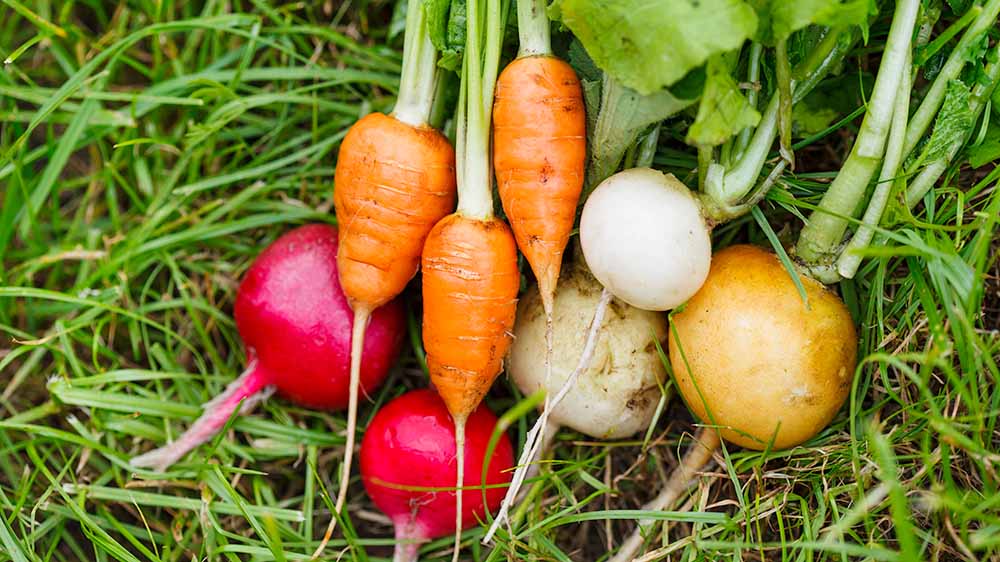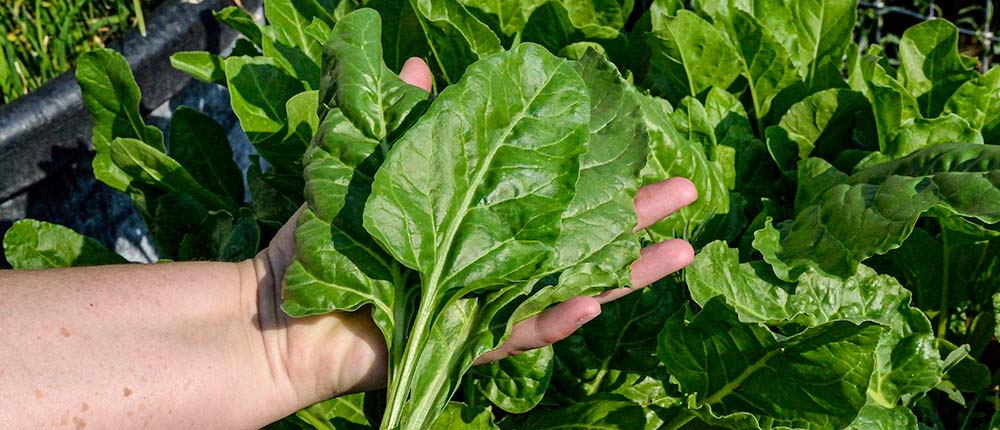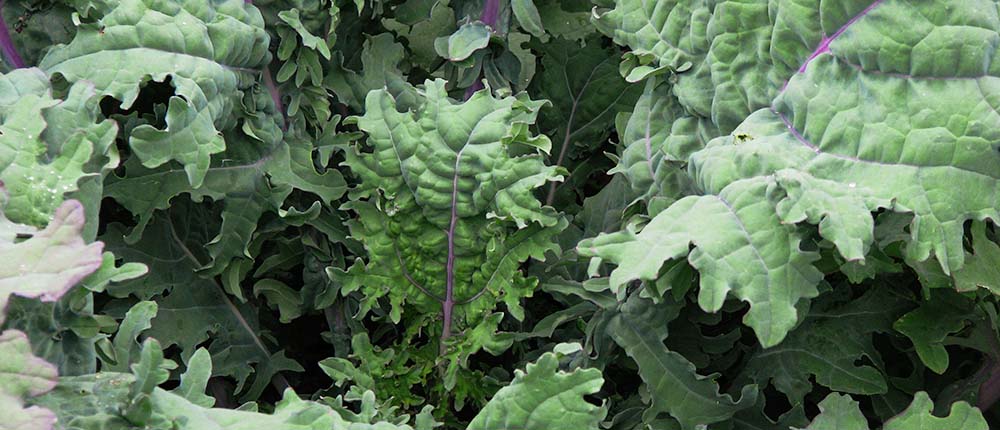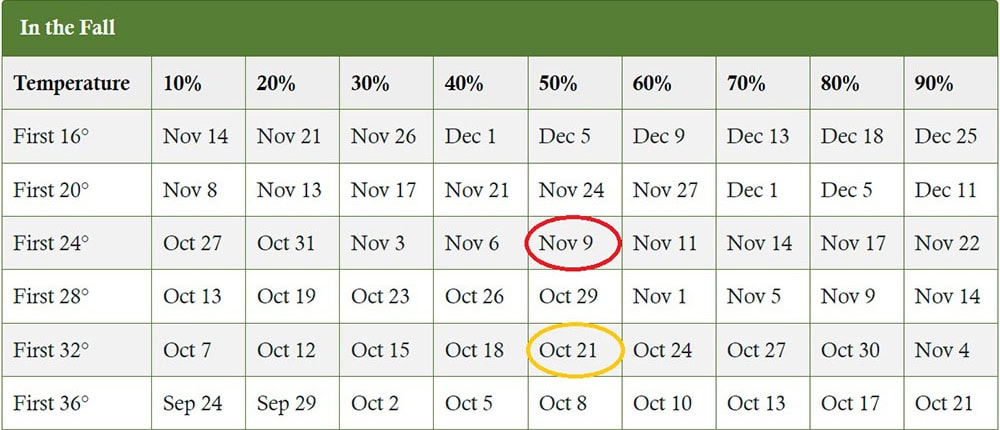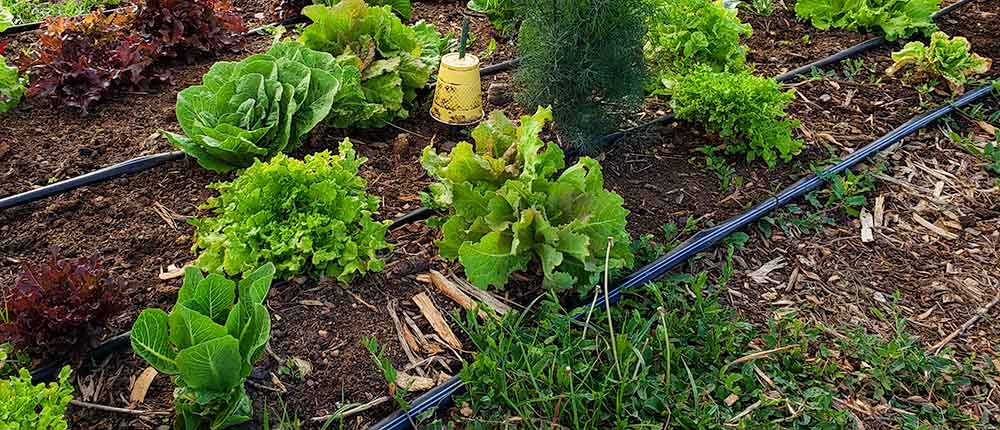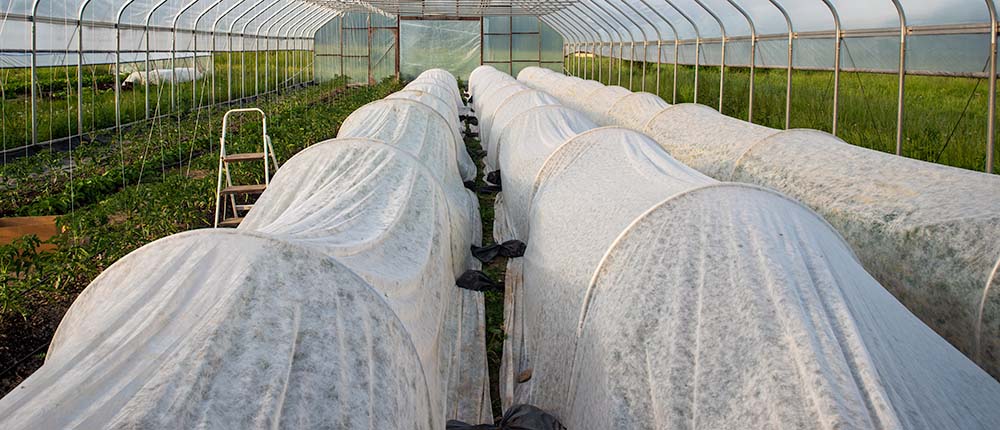Fall and Winter Gardening
A Step-by-Step Guide to Extending Your Harvest
Fall and winter gardening—also called cool-season gardening—is a technique gardeners use to extend their harvest well beyond the traditional growing season. It might seem counterintuitive, but the key to cool-season harvests is planning while the weather is hot and planting based on the tools we share in this article.
Note: This article covers the general principles for planning. If you garden in a warm-winter climate like the Desert Southwest or Gulf Coast, we have a new, in-depth guide specifically for you – The Warm-Winter Gardener’s Guide: Overcoming the Heat to Unlock a Second Spring.
Start planning now if you want fresh, flavorful vegetables when the weather turns cool.
Why?
Fall and winter gardening offers many benefits, from fewer pests and diseases to unique varieties that thrive in cooler temperatures. Many vegetables, like kale and Brussels sprouts, develop sweeter, more complex flavors after a touch of frost. If you’re curious about the advantages and possibilities, our article “Why Grow a Cool Season Garden?” is a great place to explore further.
With the right approach, your garden can produce for three seasons a year – up to eight or nine months – or even year-round in some climates. Whether you have a few pots on a balcony, raised beds in your backyard, or a traditional in-ground garden, the gardening principles remain the same.
Don’t believe us?
Take a look at the work of Eliot Coleman, a pioneer in year-round vegetable production who has been successfully growing almost year-round in Maine since the late 1970s. After discovering the best systems for his farm, he routinely out-produces farms three times larger.
Year-round gardening in hot climates often involves two distinct growing seasons – a warm season (spring/summer) and a cool season (fall/winter). Gardeners need to adapt their crop selection and gardening practices to suit each season.
We’ll walk you through the simple yet crucial steps, so you understand how to have a great harvest when the temperatures drop. We’ll cover everything from understanding your local climate and selecting suitable crops to planting and protecting your plants from frost. We’ll start with the basics and build from there so you will understand how and why to plan and plant for the best success!
By planning now, you’ll be well on your way to enjoying fresh, homegrown vegetables throughout the fall and winter months.
Spinach-Beet Greens
Plan for Success
Understand Your Local Climate
Understanding your local climate is the cornerstone of successful fall and winter gardening.
Where you live determines the length of your growing season, the types of crops that thrive, and the specific challenges you might face. For instance, gardeners in California’s mild Mediterranean climates can enjoy a much longer growing season than those in the colder regions of the Northeast.
Understanding your local climate goes beyond just knowing your region. Microclimates within your garden can create pockets of warmer or cooler temperatures, depending on factors like sun exposure, wind protection, and structures or buildings.
For instance, a south-facing wall can absorb heat during the day and radiate it back at night, creating a warmer microclimate ideal for heat-loving greens that extend your growing season by a few weeks. A shadier spot might be better suited for cold-hardy lettuces or root vegetables. Pay attention to these subtle variations within your garden and use them to your advantage when choosing planting locations.
Your regional climate also plays a significant role in choosing the right crops. In warmer areas, you might be able to grow tomatoes and peppers well into the fall, while those in colder regions might focus on frost-tolerant greens like kale and spinach. By understanding the unique characteristics of your climate, you can tailor your plant selection and gardening practices to maximize your harvest.
Red Russian Kale
Know Your Frost Dates
Frost dates are essential knowledge for any gardener because they mark the beginning and end of your growing season. The first frost date in fall signals the end of the warm-weather growing season and the potential for damage to tender plants, while the last frost date in spring indicates when it’s safe to start planting and transplanting again without fear of frost.
The first frost date is a 50% chance of a 32°F frost in the fall. The last frost date is a 50% chance of a 32°F frost in the spring.
Knowing these dates helps you plan better, time your plantings, and ensure a successful harvest.
The National Gardening Association’s frost date guide by ZIP code is a handy resource for finding your local frost dates.
By entering your ZIP code, you’ll receive a detailed chart with historical temperature data for your area. This chart will show the average dates for light, moderate, and killing frosts, giving you valuable information to plan your garden accordingly.
First frost dates guide for our home garden in Chino Valley, AZ
We are using our home data from Chino Valley, AZ, to show you how this works.
Our first expected frost date is October 21, with a killing frost expected on November 9. You’ll find your first frost date the same way – the 50% chance of a Fall 32°F night.
Remember that frost isn’t a one-size-fits-all phenomenon. There are different types of frost, each with different effects on your plants:
- Light Frost (32°F): This type of frost forms a thin layer of ice crystals on plant surfaces. Tender plants may be damaged, but hardy plants can usually withstand a light frost.
- Moderate Frost (28°F): This frost creates a thicker layer of ice and can damage the foliage of most plants.
- Killing Frost (24°F): This hard freeze can kill most annual plants and damage the roots of unprotected perennial plants.
Understanding the different types of frosts and their potential impact on your garden will help you make informed decisions about when to plant, when to protect your plants with covers or other methods, and when to harvest. Working with these dates can extend your growing season and maximize your harvest potential.
Know the Details
Successful fall and winter planting comes from knowing a few details and working from the first frost date on the calendar to find when to start your fall seedlings or direct sow your seeds so you can be sure to have them harvested before the hard frost sets in.
You’ll need to know the days to maturity for what you want to grow – for example, the Bull’s Blood Beet is a 55-day variety.
Knowing our first frost date and days to maturity, we can now use the following guidelines to find the perfect time to plant –
Fall Direct Sowing Guideline
Average days to maturity + 2 weeks for Fall Weather Factor = number of days to count backward from the first frost date for a good harvest.
The Fall Weather Factor gives you flexibility for variable weather, such as an unexpected cold snap, and accounts for slower growth in cooler weather and shorter days.
Here’s how the direct sowing guideline looks –
- Our 50% chance of 32°F frost is October 21
- The Spinach Beet-Greens is a 60-day Swiss chard
- We add 2 weeks for the Fall Weather Factor
- This adds up to 74 days – 60 days to maturity + 14 days Fall Weather Factor = 74 days.
- 74 days is 10.6 weeks, so if we round out, it gives us 11 weeks.
Counting backward 11 weeks from October 21 is August 5, so that is the week we will direct sow the Swiss chard.
Now, we can choose what we want to eat as the weather cools off, planting with confidence as we know the timing each vegetable needs to grow fully and be ready to harvest before the frost arrives.
Fall Transplanting Guideline
What if you wanted more production or needed to wait for the hot weather to cool off a bit before planting?
That’s where the transplanting guideline comes in.
Unlike your spring garden with tomatoes and peppers, fall transplants only need to be three or four inches tall, as the weather is already warm. Leafy crops like kale, lettuce, cabbage, and spinach do exceptionally well as cool-season transplants.
To determine your starting date for fall transplants, use the Direct Sowing Guideline, but add 14 days for the seeds to grow to the transplant stage.
Here’s how it looks –
- Transplant stage of 14 days + average days to maturity + 2 weeks for Fall Weather Factor = number of days to count backward from the first frost date for a good harvest.
- This adds up to 88 days – 60 days to maturity for the Swiss chard + 14 days to the transplant stage + 14 days for the Fall Weather Factor = 88 days, or 12 weeks.
- Counting 12 weeks back from October 21 gives us the week of July 28 to start our Swiss chard transplants.
Lettuce seedlings for transplanting in fall
Why This Works
This approach gives us a couple of hedge factors, as the 32°F date is at 50% – meaning a medium chance of a lighter frost, which will usually give us a week or more past that.
We don’t count on it but will use it if given the extra time. Another hedge factor comes into play by planting fast-maturing varieties – this gives you an extra edge in time over slower-maturing ones. For example, a smaller 40-day carrot vs. a larger 60-day one.
These examples assume the garden is finished when the frost hits. You can extend the season with row covers, low tunnels, or other frost protection, sometimes for several weeks!
Cool season greens garden
Choosing the Right Crops
Now that you have a good handle on your climate and frost dates, it’s time for the fun part: choosing your crops! The best place to start is with your taste buds. What vegetables do you and your family love to eat? Make a list of your favorites, and then see which ones grow well in the cooler temperatures of fall and winter.
You might be surprised at the variety of delicious options available for your fall and winter garden. Familiar favorites like kale, beets, carrots, Swiss chard, leeks, spinach, and lettuce are all excellent choices. But don’t stop there! Experiment with lesser-known gems like mache, radish, mustard greens, kohlrabi, parsley, radicchio, turnips, and cress. To explore a wide range of cool-season vegetables and discover new favorites, check out our article “Cool Season Vegetables to Love.”
Fall and winter gardening opens up a whole new world of flavors to explore. With a little planning and the right choices, you can enjoy an extended harvest of delicious, homegrown vegetables even as the temperatures drop.
Row covers inside a greenhouse
Extending Your Harvest Season
With a few simple strategies, you can extend your harvest season well into the colder months and, in some cases, even year-round.
Row covers: These lightweight, breathable fabrics act as a blanket for your plants, trapping heat and protecting them from light frosts. Drape them directly over your plants or use hoops to create a mini-greenhouse effect. Row covers are versatile and can be used throughout the fall and winter, offering several degrees of frost protection.
Low tunnels/hoop houses: These structures are essentially larger row covers created by using hoops or PVC pipes to support a heavier material like plastic or frost cloth. They provide a warmer and more stable microclimate within the tunnel, allowing you to grow cold-sensitive crops like lettuce and spinach later into the season.
Cloches: These individual plant covers are like mini-greenhouses for single plants. They can be made from glass jars or plastic bottles or purchased as specialized cloches. They are perfect for protecting young seedlings or heat-loving plants like peppers and tomatoes from early frosts.
Cold frames: These insulated boxes with a transparent lid are a more permanent solution for extending your growing season. They trap solar heat during the day and protect plants from freezing temperatures at night. Cold frames can be used to start seeds early in the spring, protect seedlings from late frosts, or extend the harvest of cold-hardy vegetables throughout the winter.
By experimenting with these different frost protection strategies, you can potentially extend your harvest season by several weeks or even months, depending on your climate and the specific methods you use.
Getting Started
How do you integrate this into your existing garden?
That’s the easy part!
Space opens up as you harvest, making room for the fall and winter planting. Start with rows of fast-growing vegetables such as lettuces, carrots, beets, and radishes. Start small and go from there. See what works and what you like, and adjust the size as needed.
You now have the tools to grow the tastiest vegetables and greens from your own fall and winter garden. Most varieties that do well for fall gardening gain flavor as the weather turns cool. Many become sweeter, while others gain richness in flavors. You will only find these flavors in your own home garden!

